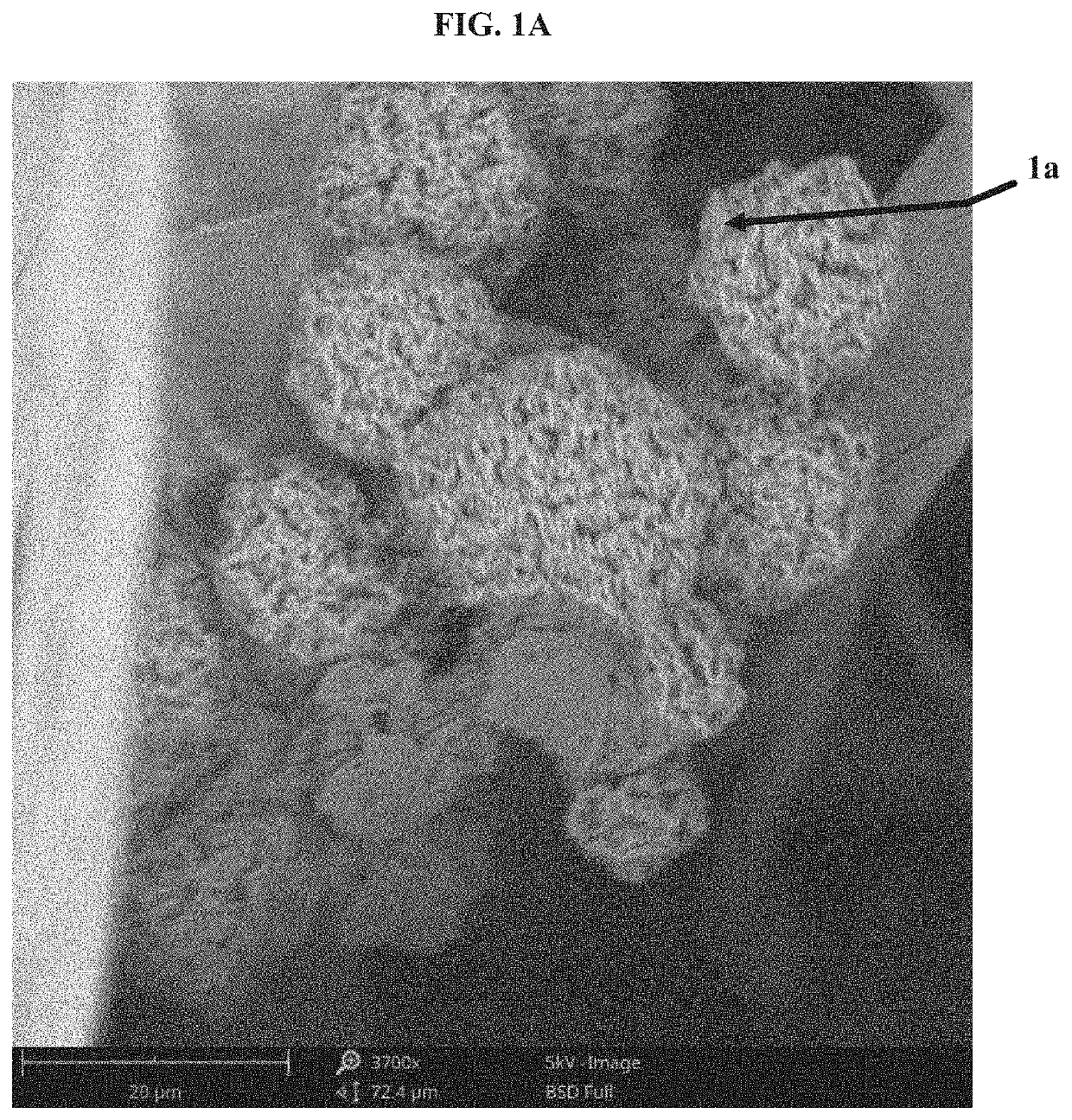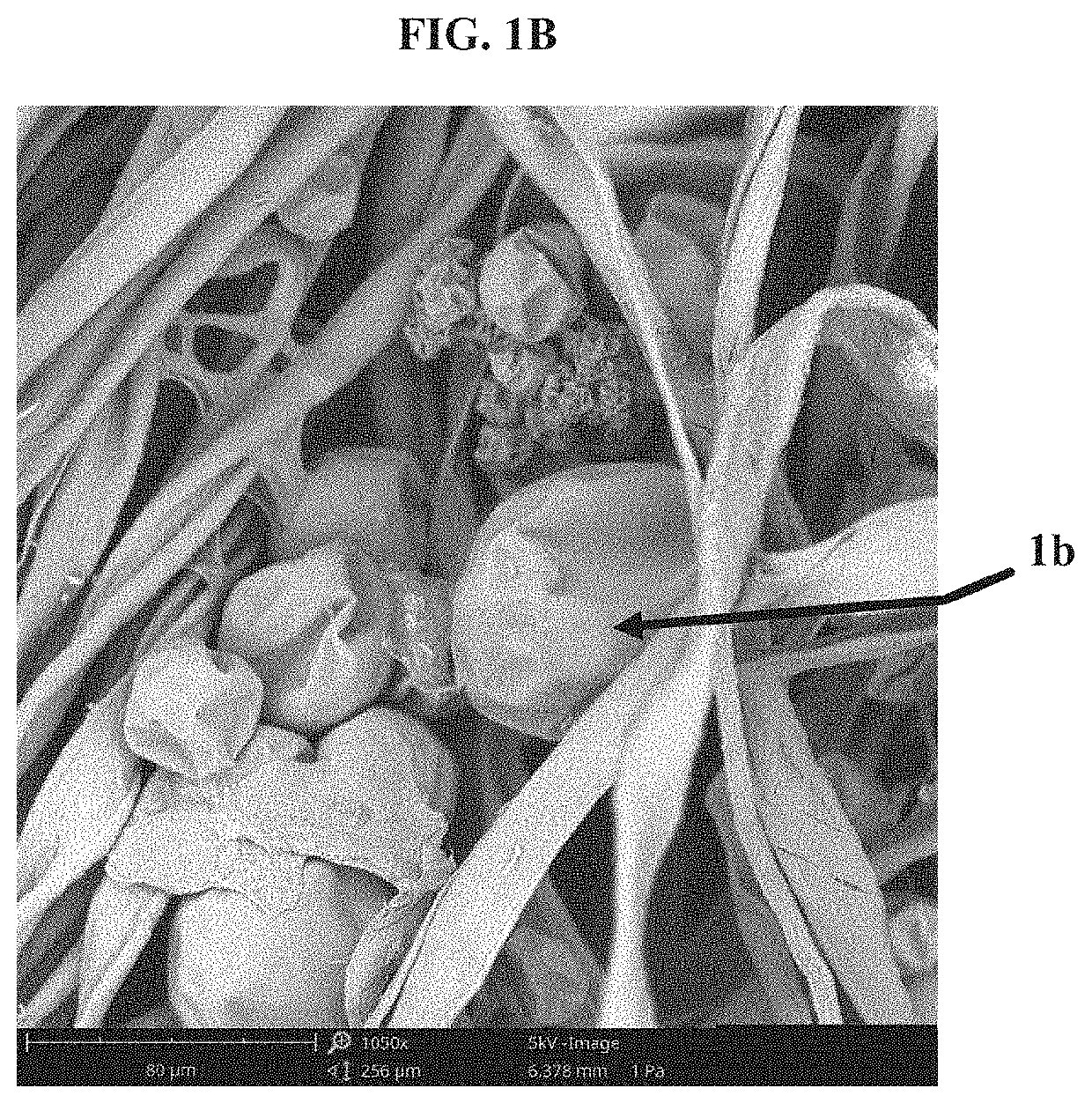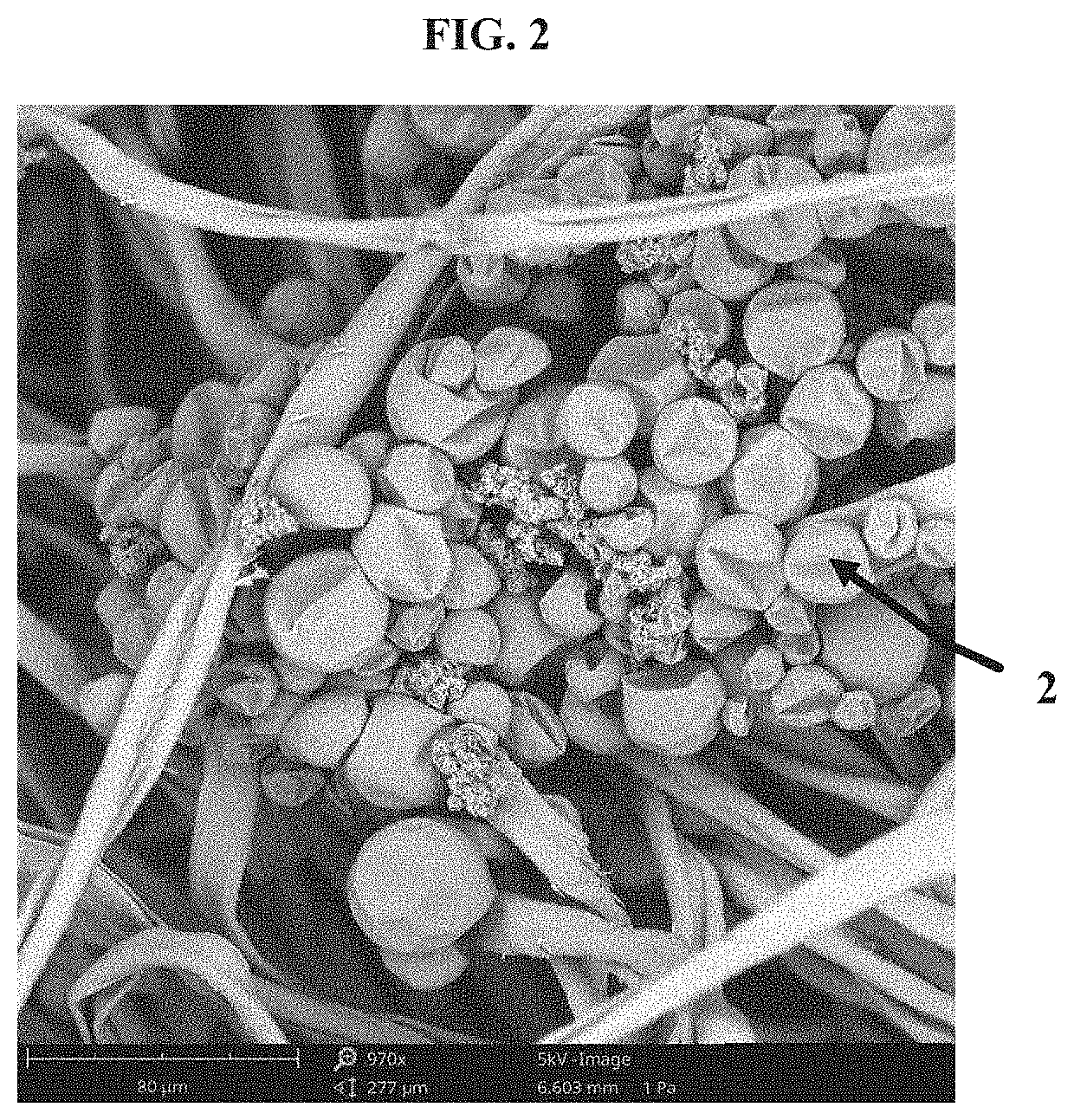Environmentally biodegradable microcapsules
- Summary
- Abstract
- Description
- Claims
- Application Information
AI Technical Summary
Benefits of technology
Problems solved by technology
Method used
Image
Examples
example 1
Type A Particles
[0285]Prepare Oil Phase: 53 g of Perfume oil, 1.83 g of sorbitol polyglycidyl ether, 00.64 gg of Trimethylolpropane triglycidyl ether, 1.01 g of Tetraethyl orthosilicate, 0.62 g of 1,2-Bis(Triethoxysilyl)ethane, 1.72 g of polyisocyanate and 2.9 g of isocyanurate based trimer of pentane-1,5-diisocyanate were mixed in the order mentioned. Contents were allowed to stir for 10 minutes at 100-150 rpm using a magnetic stir bar for homogeneity.
[0286]Prepare Aqueous Phase: 125 grams of 5 wt % aqueous solution of polyvinyl pyrrolidone is prepared.
[0287]Emulsion Formation: The prepared oil phase is added into the aqueous phase while agitating the aqueous phase using a Caframo BDC6015, 3-blade pitched agitator shaft 1″ diameter, at 740 rpm for 20 minutes to form a pre-mix emulsion. An aliquot is analyzed by optical microscopy to understand particle size of the emulsion. Once the desired particle size is achieved a premixed solution of water borne silsesquioxane oligomer (1.5 g)...
example 2
Type A Particles with Modified Cellulose
[0288]Prepare Oil Phase: 53 g of Perfume oil, 1.83 g of diepoxy of aliphatic dimer acid, 0.72 g of Trimethylolpropoane triglycidyl ether, 1.06 g of Tetraethyl orthosilicate, 0.62 g of 1,2-Bis(Triethoxysilyl)ethane, 0.9 g of Hydroxy propyl methyl cellulose, 1.73 g of polyisocyanate and 3 g of pentane-1,5-diisocyanate were added respectively and stirred for 10 minutes at 100-150 rpm using a magnetic stir bar for homogeneity.
[0289]Prepare Aqueous Phase: 125 g of 5 wt % aqueous solution of polyvinyl pyrrolidone is prepared.
[0290]Emulsion Formation: As explained in Example 1, oil phase is added to pre-mix aqueous phase stirring at rate of 830 rpm. Similar to example 1, after 20 minutes, a mixture of (1.65 g) water borne silsesquioxane oligomer, is added dropwise. Emulsion was stirred for 2 hr at room temperature followed by 4 hr at 60° C. Later contents were allowed to stir overnight to gradually cool the internal temperature of slurry to 23° C.
example 3
Type A particles with inorganic solid particles
[0291]Prepare Oil Phase: 53 g of Perfume oil, 1.91 g of diepoxy of aliphatic dimer acid, 0.65 g of Trimethylolpropane triglycidyl ether, 1.20 g of Tetraethyl orthosilicate, 0.65 g of 1,2-Bis(Triethoxysilyl)ethane, 0.4 g of Talc, 1.81 g of polyisocyanate and 3.02 g of pentane-1,5-diisocyanate were added respectively and stirred for 10 minutes at 100-150 rpm using a magnetic stir bar for homogeneity.
[0292]Prepare Aqueous Phase: 125 g of 5 wt % aqueous solution of polyvinyl pyrrolidone is prepared.
[0293]Emulsion Formation: Following general procedure in Example 1, oil phase is added to prepared aqueous phase agitating at 800 rpm. As explained in Example 1, after 20 minutes, a mixture of 1.65 g 0.87 g water borne silsesquioxane oligomer, is added dropwise and contents are allowed to stir for 4 hr at room temperature. and later, mixture is heated to 60° C. for 4 hr followed by overnight cooling to room temperature.
PUM
| Property | Measurement | Unit |
|---|---|---|
| Temperature | aaaaa | aaaaa |
| Time | aaaaa | aaaaa |
| Time | aaaaa | aaaaa |
Abstract
Description
Claims
Application Information
 Login to View More
Login to View More - R&D
- Intellectual Property
- Life Sciences
- Materials
- Tech Scout
- Unparalleled Data Quality
- Higher Quality Content
- 60% Fewer Hallucinations
Browse by: Latest US Patents, China's latest patents, Technical Efficacy Thesaurus, Application Domain, Technology Topic, Popular Technical Reports.
© 2025 PatSnap. All rights reserved.Legal|Privacy policy|Modern Slavery Act Transparency Statement|Sitemap|About US| Contact US: help@patsnap.com



